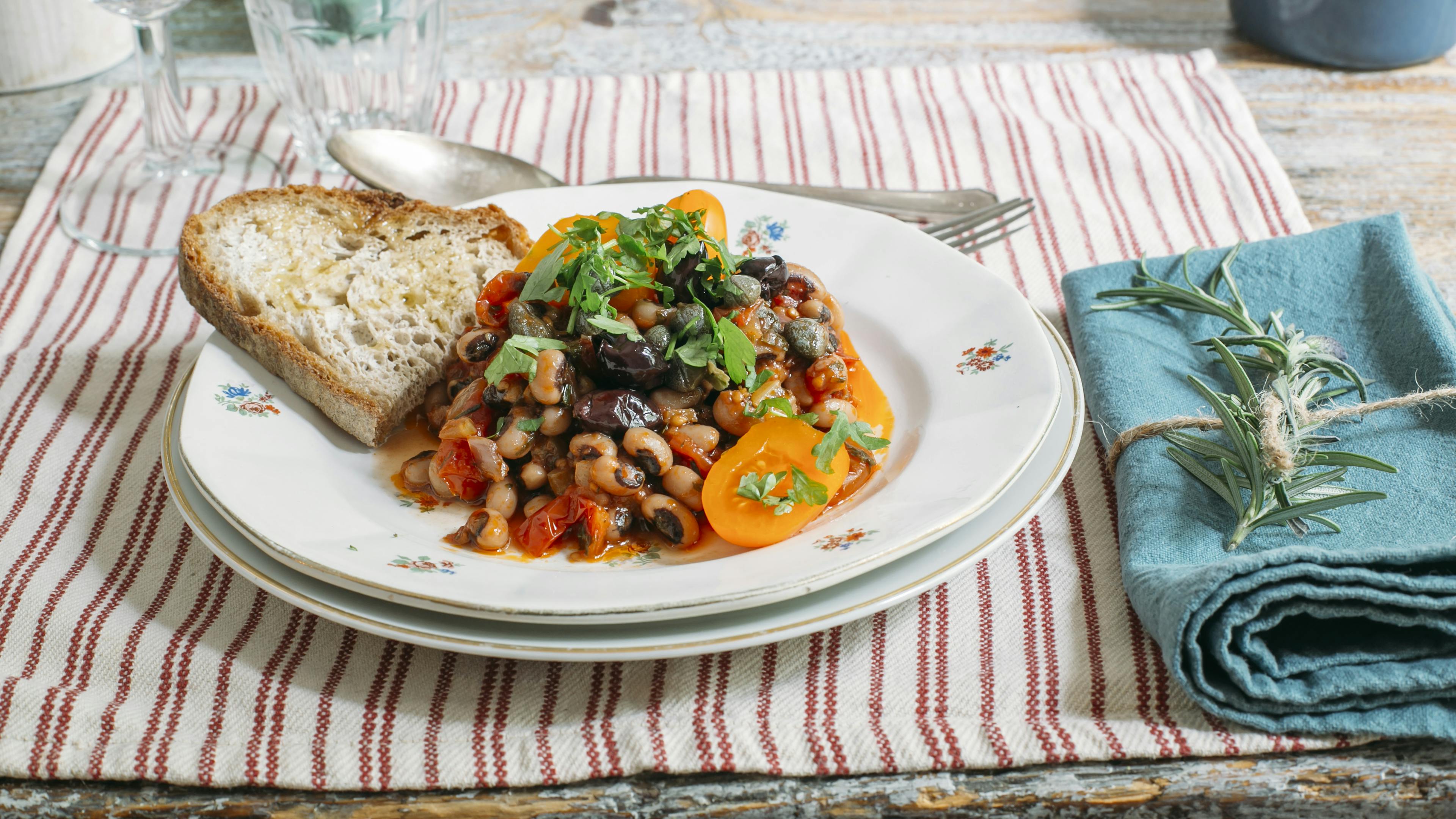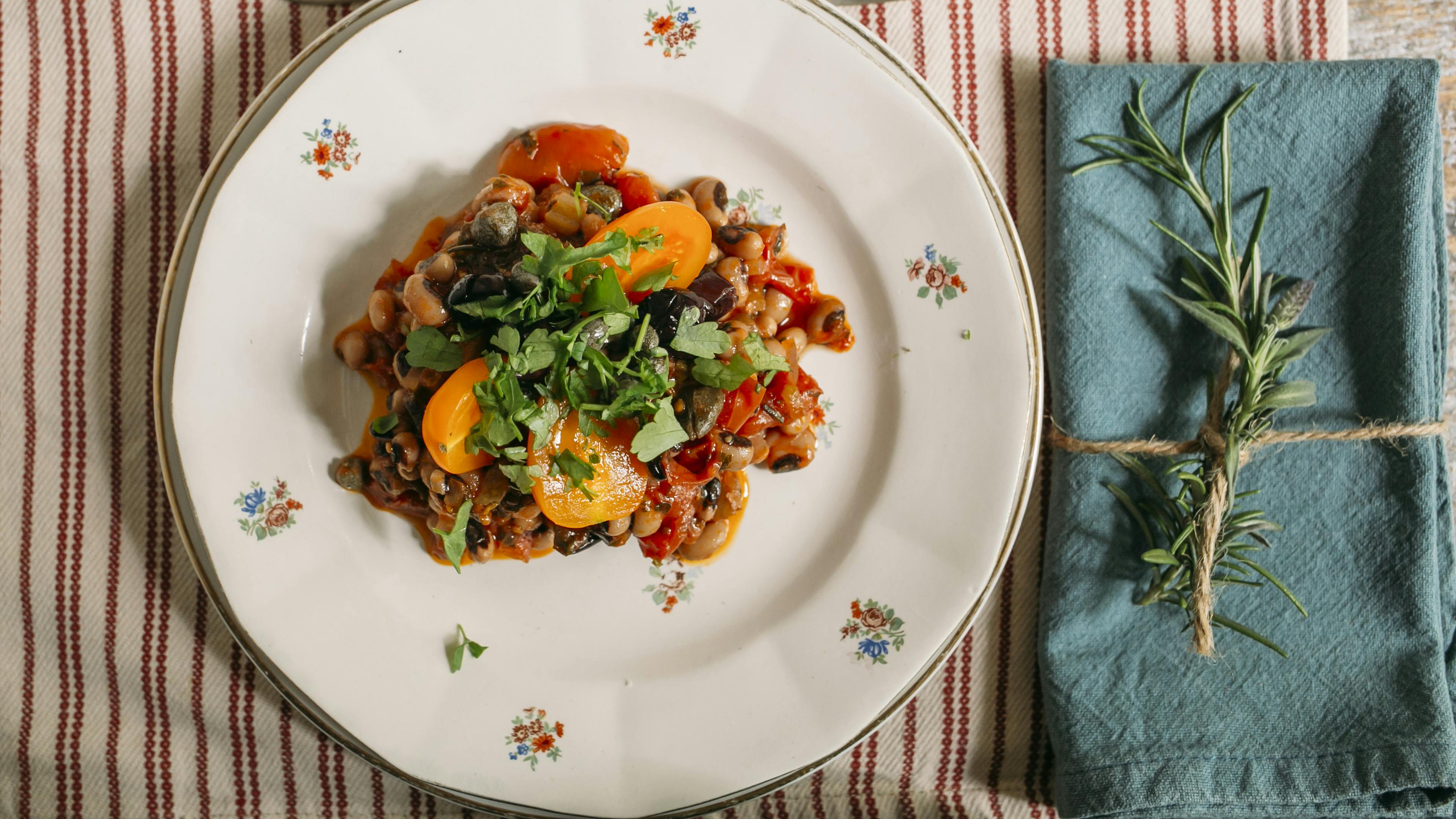

Now little known and utilized, eye beans are a type of legume that is delicious and rich in properties. Our Cesarina Beatrice has shared with us her easy and quick recipe to prepare a summer stew that enhances the flavor of this legume.
If you're looking for a dish for a light, healthy, quick, and also suitable for athletes (beans are an excellent source of protein), keep reading!

Summer eye bean stew
A rustic dish, a flavorful and nourishing comfort food
Ingredients
- 120 g dried eye beans (about 350 g if already cooked and drained)
- 400 g tomato pulp
- 1⁄2 glass of white wine
- 1⁄2 onion, 1 carrot, 1 celery stalk
- 200 g bell peppers (yellow and red)
- 200 g fresh cherry tomatoes (red and yellow)
- A handful of Taggiasca olives
- A handful of capers in salt
- A handful of celery leaves
- Fresh aromatic herbs: parsley, thyme, oregano
- Extra virgin olive oil, whole sea salt, pepper
Method
- After soaking them in plenty of water overnight, drain, rinse, and cook the beans by boiling them for about 45-60 minutes until they are tender but not falling apart. Note: only add salt at the end of cooking.
- Meanwhile, finely chop onion, carrot, celery, add half of the thyme and oregano leaves, and sauté for a few minutes in extra virgin olive oil.
- Add the roughly chopped bell peppers, deglaze with wine, then add the tomato pulp and cook over low heat.
- After about twenty minutes, add the cooked and drained beans (if the sauce is too thick, you can dilute it by adding a ladle of cooking water), the chopped red and yellow cherry tomatoes, desalted capers, Taggiasca olives, and celery leaves.
- Let it flavor for about 5 minutes.
- Adjust the salt and let it cool down; before serving, add the roughly chopped aromatic herbs with scissors directly into the pot or plate, a drizzle of olive oil, and some freshly ground pepper, if desired. Mix and serve.
A bit of history
Characterized by a small black spot on the side resembling an eye, these beans were the only ones known in the Old Continent before Christopher Columbus brought the larger borlotti beans from America, which almost supplanted the eye beans.
The Egyptians called them dolichos and they were the ritual food of the priests; while the Romans considered them a plebeian food not suitable for aristocrats, so much so that the poet Virgil called them vilem phaseulum, meaning "vile" beans.
The nutritional characteristics
Today, this type of legume is (fortunately) revalued. Yes, because besides being very tasty, they are rich in nutrients: they contain about 30% protein, are rich in fiber, vitamins (including A, C, and those of group B) and minerals such as iron, magnesium, and potassium. At the same time, they are low in fat and are therefore suitable even for those following a low-calorie diet; moreover, they have a low glycemic index and help maintain an optimal blood sugar level.
The eye beans in other cultures
If in our culture this type of beans is spreading again after being almost completely forgotten, in other cultures it is instead very widespread and consumed. In African and American cuisine, for example, they are widely used, and tradition dictates that they are eaten on New Year's Day as a sign of good luck, similar to what we do with lentils.
Our vegetarian and vegan experiences
If you don't feel like getting into the kitchen, take a look at these experiences: perhaps not everyone knows it, but authentic Italian cuisine offers countless vegetarian and vegan dishes, rich in flavor and absolutely enticing.
Discover the vegetarian and vegan menus carefully prepared for you by our Cesarine, or learn to cook vegetarian with our cooking classes!